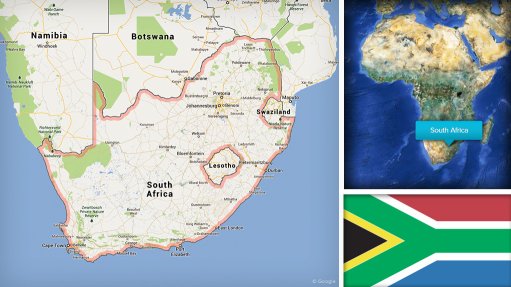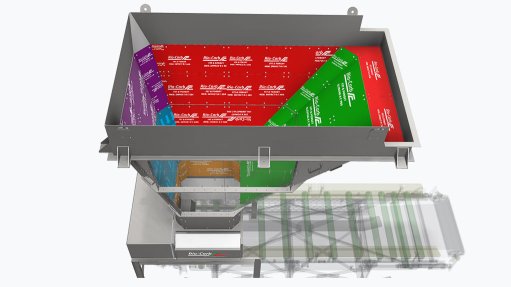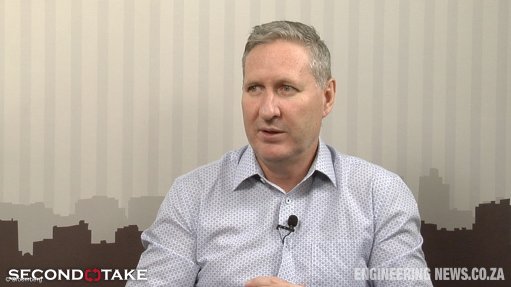South Africa’s overall gross R&D spending not reduced because of Covid-19, reports HSRC
The Covid-19 pandemic had no discernible impact on overall research and development (R&D) activity in South Africa, the Human Sciences Research Council (HSRC) has found. The HSRC has released its latest National Survey of Research and Experimental Development, conducted by its Centre for Science, Technology and Innovation Indicators (CeSTII) on behalf of the Department of Science and Innovation, covering 2020/21.
Using current prices, the survey found that South Africa’s gross domestic expenditure on R&D (GERD) amounted to 0.61% during 2020/21, in comparison to the 0.62% recorded during 2019/20. In measuring the country’s GERD, the CeSTII uses guidelines issued by the Organisation for Economic Cooperation and Development, allowing international comparisons to be made. The CeSTII has been carrying out these surveys since 2001/02, and these surveys cover five sectors: (in alphabetical order) business, government, higher education, not-for-profit organisations and science councils.
“As we emerge from Covid-19 and tackle the many challenges that face us nationally and globally, our capacity to fund and perform R&D in order to innovate is vital,” highlighted CeSTII executive head Dr Glenda Kruss. “Countries that create ideal conditions for R&D to flourish reap multiple rewards. These range from solutions to health, environmental and social challenges to new discoveries that trigger economic growth and new knowledge. The business, higher education, government, science councils and not-for-profit sectors exist in relationships of synergy, and we need investment in R&D to thrive in all these sectors to improve our national system of innovation.”
One of the key findings of the report was that, after a large fall during 2019/20, the number of people employed in the R&D sector in South Africa increased again in 2020/21. This increase was driven by the business sector, which increased its R&D staff complement by 1 429 (apparently for R&D launched in response to the pandemic), while the government’s R&D personnel numbers stayed steady. The higher education sector actually cut its R&D staff by 666.
But while business increased its R&D staff complement, the sector as a whole cut its R&D expenditure during 2020/21 by R657-million, of which reduction in State-owned companies were responsible for R394-million, reducing their share of business sector R&D by five percentage points, to 14.2%. Higher education also cut its R&D spending, by R393-million, as did the science council sector, by R296-million. South African R&D funding from outside the main institutional sectors increased by R127-million, while foreign funding for South African R&D fell by R201-million.
Within the business sector, the main subsectors regarding R&D spending continued to be financial intermediation (responsible for 42.3%) and manufacturing (28.8%). But while financial intermediation increased R&D expenditure by R218-million, manufacturing cut its funding by R561-million, from R3.456-billion to R2.895-billion. Agriculture dropped its R&D spending by R256-million, while transport reduced its figure by R229-million. On the other hand, mining and quarrying increased its R&D budgets by R241-million, to reach a total of R927-million.
Overall, government was responsible for 56.3% of the country’s R&D expenditure. Business accounted for 26.9% and foreign sources for 13.3%. In terms of research areas, that which received the most money was the medical and health science sector, with 22.1%. The social science sector came next, at 19.7%, and the engineering sciences were in third place, with 12.9%. Areas which saw increased R&D budgets were biotechnology, nanotechnology, environment-related fields, communicable diseases and space science.
In geographical terms, most of the country’s R&D was still performed in Gauteng province, followed by the Western Cape and then KwaZulu-Natal. But while R&D spending in Gauteng fell by R332-million in 2020/21, it increased by R71-million in the Western Cape and by R351-million in KwaZulu-Natal. R&D spending in the Free State province also increased, by R469-million.
Kruss pointed out that all sectors needed to strengthen their ability to fund and carry out R&D. “[P]olicymakers and scholars should engage this data robustly, to inform deliberation about growing R&D to reach national investment targets, and to address our socioeconomic development challenges.”
Comments
Press Office
Announcements
What's On
Subscribe to improve your user experience...
Option 1 (equivalent of R125 a month):
Receive a weekly copy of Creamer Media's Engineering News & Mining Weekly magazine
(print copy for those in South Africa and e-magazine for those outside of South Africa)
Receive daily email newsletters
Access to full search results
Access archive of magazine back copies
Access to Projects in Progress
Access to ONE Research Report of your choice in PDF format
Option 2 (equivalent of R375 a month):
All benefits from Option 1
PLUS
Access to Creamer Media's Research Channel Africa for ALL Research Reports, in PDF format, on various industrial and mining sectors
including Electricity; Water; Energy Transition; Hydrogen; Roads, Rail and Ports; Coal; Gold; Platinum; Battery Metals; etc.
Already a subscriber?
Forgotten your password?
Receive weekly copy of Creamer Media's Engineering News & Mining Weekly magazine (print copy for those in South Africa and e-magazine for those outside of South Africa)
➕
Recieve daily email newsletters
➕
Access to full search results
➕
Access archive of magazine back copies
➕
Access to Projects in Progress
➕
Access to ONE Research Report of your choice in PDF format
RESEARCH CHANNEL AFRICA
R4500 (equivalent of R375 a month)
SUBSCRIBEAll benefits from Option 1
➕
Access to Creamer Media's Research Channel Africa for ALL Research Reports on various industrial and mining sectors, in PDF format, including on:
Electricity
➕
Water
➕
Energy Transition
➕
Hydrogen
➕
Roads, Rail and Ports
➕
Coal
➕
Gold
➕
Platinum
➕
Battery Metals
➕
etc.
Receive all benefits from Option 1 or Option 2 delivered to numerous people at your company
➕
Multiple User names and Passwords for simultaneous log-ins
➕
Intranet integration access to all in your organisation


















